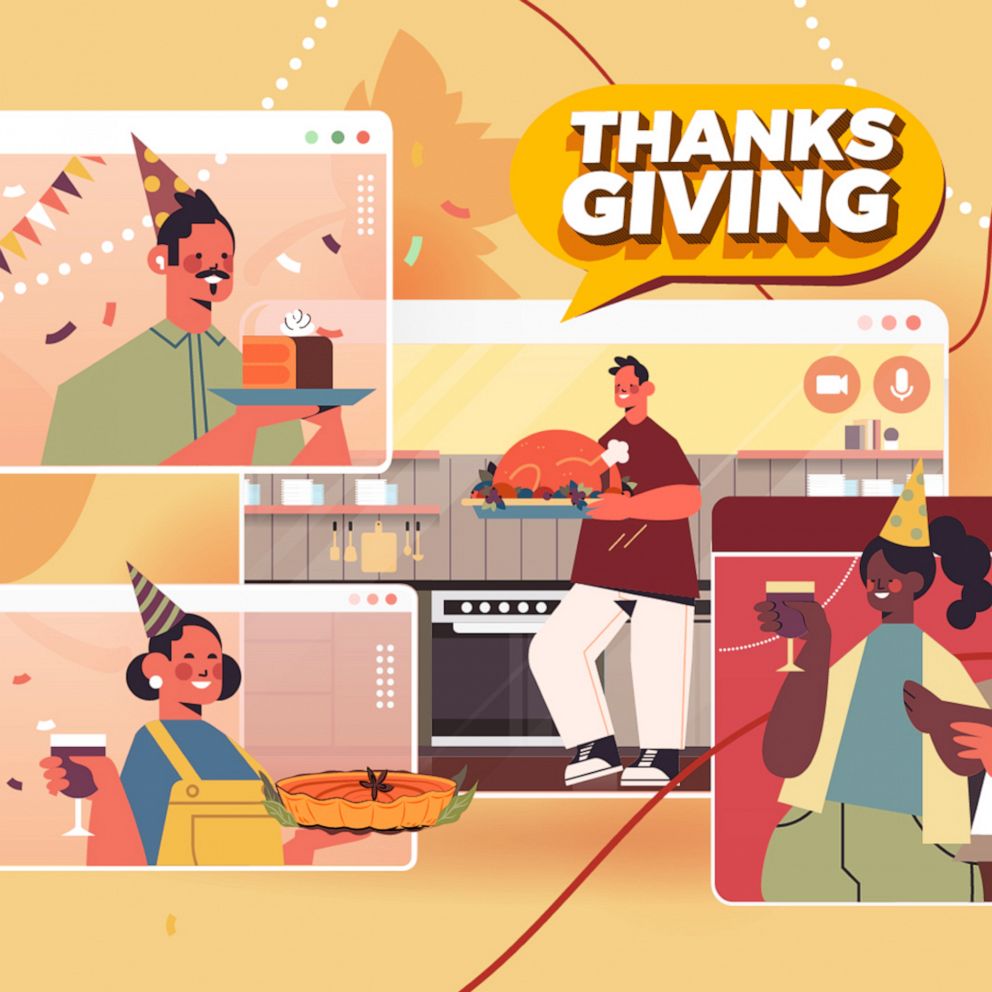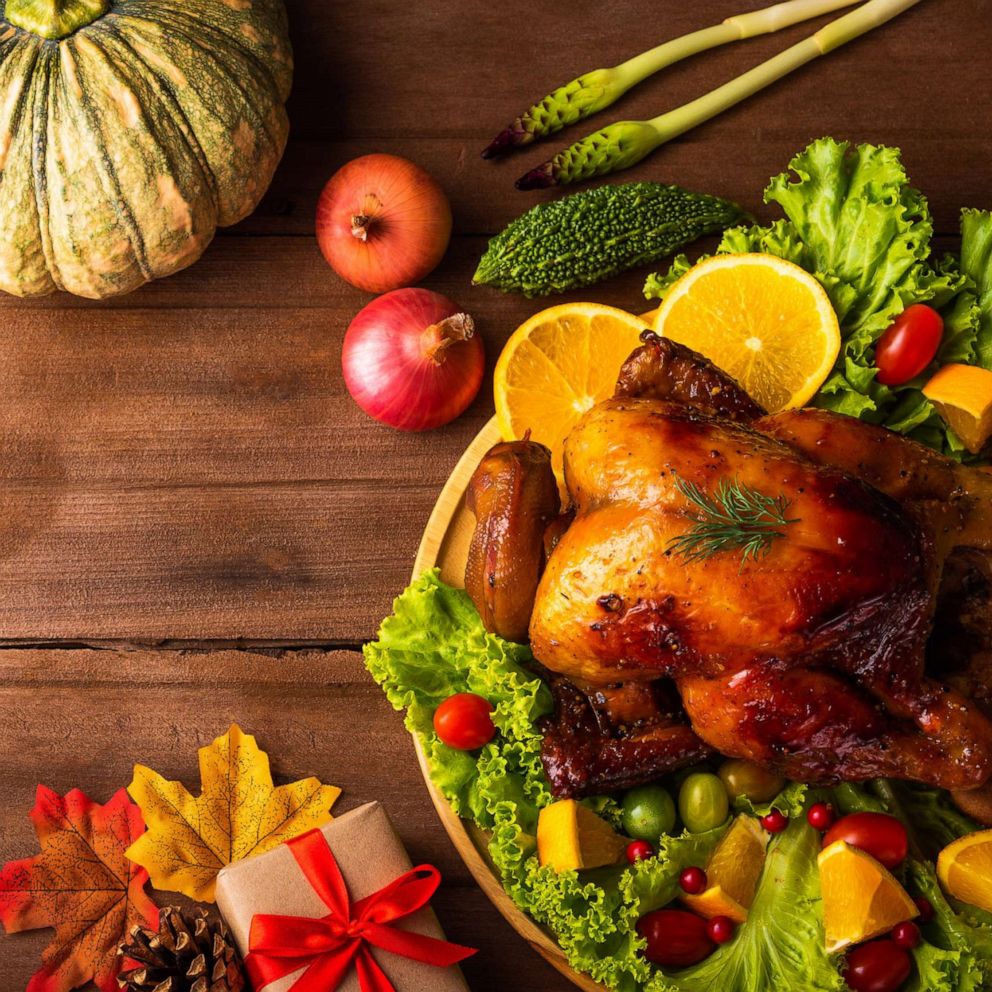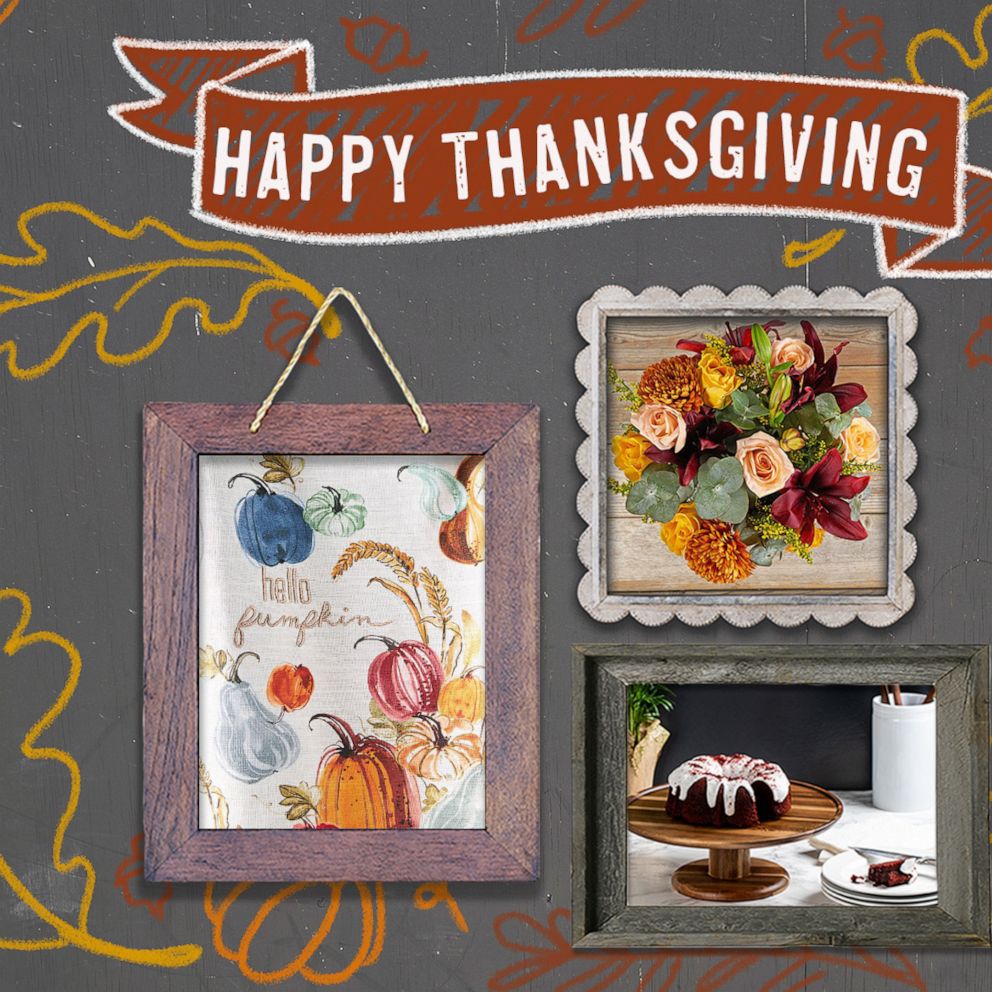Thanksgiving safety amid COVID-19: Here's what you should consider to stay safe
This Thanksgiving here are some tips from a top doctor to stay safe.
Thanksgiving is a time to celebrate and be grateful with family and friends, but festivities will likely look different this year due to the pandemic.
"Understanding that everyone has this traditional emotional understandable warm feeling about the holidays and bringing a group of people, friends and family, together in their house indoors, that's understandable, but we really have to be careful this time," Dr. Anthony Fauci told chief anchor George Stephanopoulos on "Good Morning America" Thursday. "Each individual family evaluate the risk-benefit of doing that, particularly when you have people coming in from out of town who may have been on airplanes, in airports to just come into the house."
Fauci, whose own children won't be coming home from out of state for the holiday due to the pandemic, added that "if you have vulnerable people, the elderly or people with underlying conditions, you better consider whether you want to do that now or maybe just forestall it and just wait and say, 'you know, this is an unfortunate and unusual situation, I may not want to take the risk.'"
Ultimately though, Fauci reminded that "it's up to the individuals and the choices they make."
The Center for Disease Control and Prevention outlined lower and higher risk activities this year, in which they warned against large indoor gatherings with those outside your immediate household or going shopping in crowded stores around Thanksgiving Day.
"The safest way to celebrate Thanksgiving this year is to celebrate with people in your household. If you do plan to spend Thanksgiving with people outside your household, take steps to make your celebration safer," the organization said.
But there are still safe and healthy ways to enjoy being with company this holiday. Dr. Bita Nasseri, a leading Mayo Clinic trained physician and her husband, Dr. Shawn Nasseri, dished out their expert opinions for "Good Morning America" to help anyone still looking to host or attend a Thanksgiving gathering.
How to prepare to get guests safely gathered on Thanksgiving
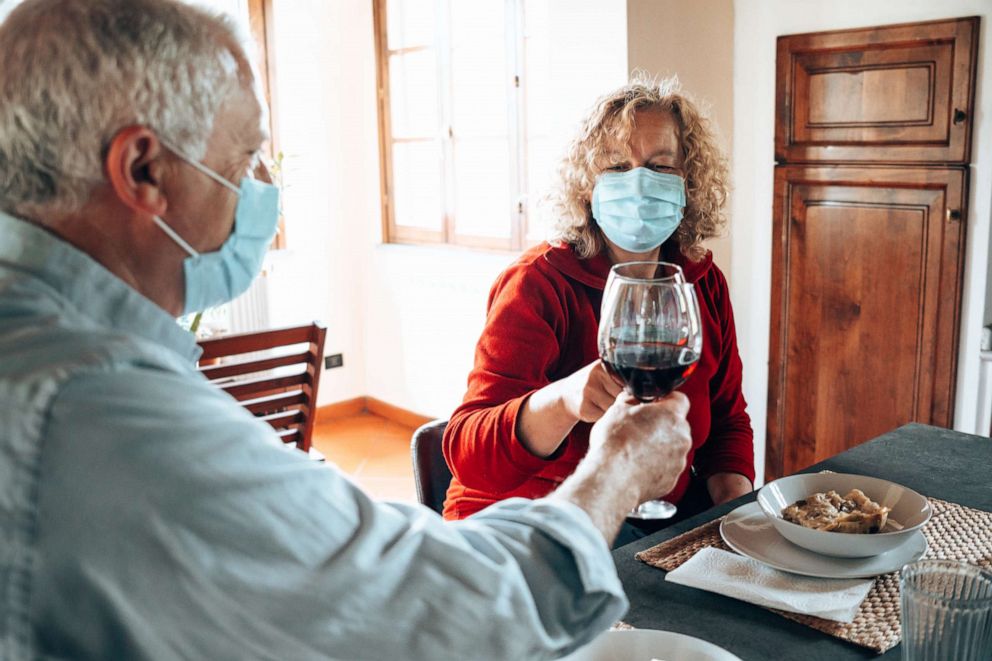
"The whole point is to be thankful for the experience of being with family and healthy," Dr. Shawn Nasseri said. "The more you plan in advance the better it's gonna go for keeping people as safe as possible and minimize everyone else's exposure."
Create a checklist for your guests
"This shouldn't be a drag it could be a pleasant experience knowing that you're doing something that's not just protecting you. Your proactivity is helpful to others," Dr. Bita Nasseri said.
She said hosts should create a COVID symptom checklist for guests to self-assess a few days before the gathering.
"What that means is be very true to yourself and protect yourself to protect others. Go over the COVID symptom list. Sometimes you may forget you have one of those symptoms and you didn't realize you may be symptomatic," she said.
Watch out for fever, runny nose, body aches, upset stomach, cough -- "if you have any of those symptoms be conscientious and tell others that you're symptomatic and may not be able to attend."
"As a host, have a checklist in your head that you've checked in with all your guests, assure that they're asymptomatic before arrival. Set out a table for them to all use hand wipes before entering. Scan their temperature, you're doing it to protect others. Go through the checklist and make sure you are prepared for hosting. If you know what you're expecting upon arrival of your guests, you won't be going out of your comfort zone."
"Remind invited guests to stay home if they have been exposed to COVID-19 in the last 14 days or are showing COVID-19 symptoms," the CDC recommended in it's guidelines for social activities and hosted gatherings.
Wear a mask
The CDC advised wearing facial coverings that fit snugly against the sides of the face with two or more layers. The mask should fit over the nose and mouth and secured under the chin.
The organization also offered tips to safely store a mask while eating or drinking.
Optimize outdoor space when possible
"Think outside the box of your normal dining room table," Bita Nasseri said. "If you can, have the event outdoors," she suggested, adding that you could put smaller groups "under a covered patio with heaters when needed."
The CDC said that a "small outdoor dinner with family and friends who live in your community" is considered to be a moderate risk activity.
Give guests room to breathe inside
To minimize possible airborne exposure, both doctors suggested putting one or two air filters in the room where people will gather and open the windows to get natural airflow through the house.
"Fresh air will actually drop the concentration of any kind of germs and microbes that sit around," Bita Nasseri said. "Fresh air is always good for you."
Her husband added that air purifiers help with not just respiratory droplets, but to "draw aerosols away from everyone -- that's what we do in medical office buildings."
At a minimum, they said to arrange seats with three feet of space between guests and arrange multiple tables to separate people in less concentrated crowds.
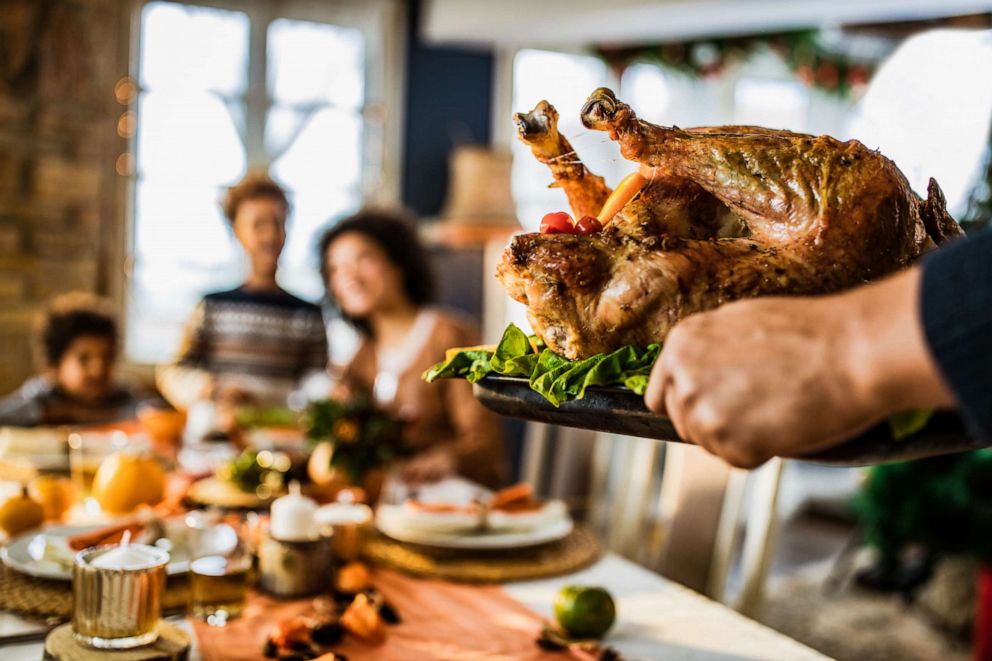
It won't be a traditional set up with one big dining room table with six or eight people, so they suggest "getting small tables gathered across multiple rooms" to space out peoples' proximity.
"Older folks who are more susceptible are in one room and children or younger people are in another room and that way you really minimize the exposure," he said. "Children could be significantly less symptomatic and not realize that they're exposing grandparents, great aunts and uncles or anyone who is in a high risk category."
Reduce contact by swapping out family-style serving
One simple solution to minimize exposure during the meal is to have just one person serving and handling the food and desserts.
"It's hard because it's such an emotional connection for most people with the food and preparing the food," Shawn Nasseri explained. "You're not gonna keep your aunt from making her favorite stuffing, but what you can do is have one person serving the food."
The designated person serving the food, the pair suggested, should wear a face mask and gloves while plating to decrease traffic and any possible exposures.
"This is a good year to not use silverware, maybe you can use plastic forks and plates. Have fun with it and limit exposure that way," she added.
Unlike some germs, there's no indication coronavirus can spread through food, according to the U.S. Food and Drug Administration.
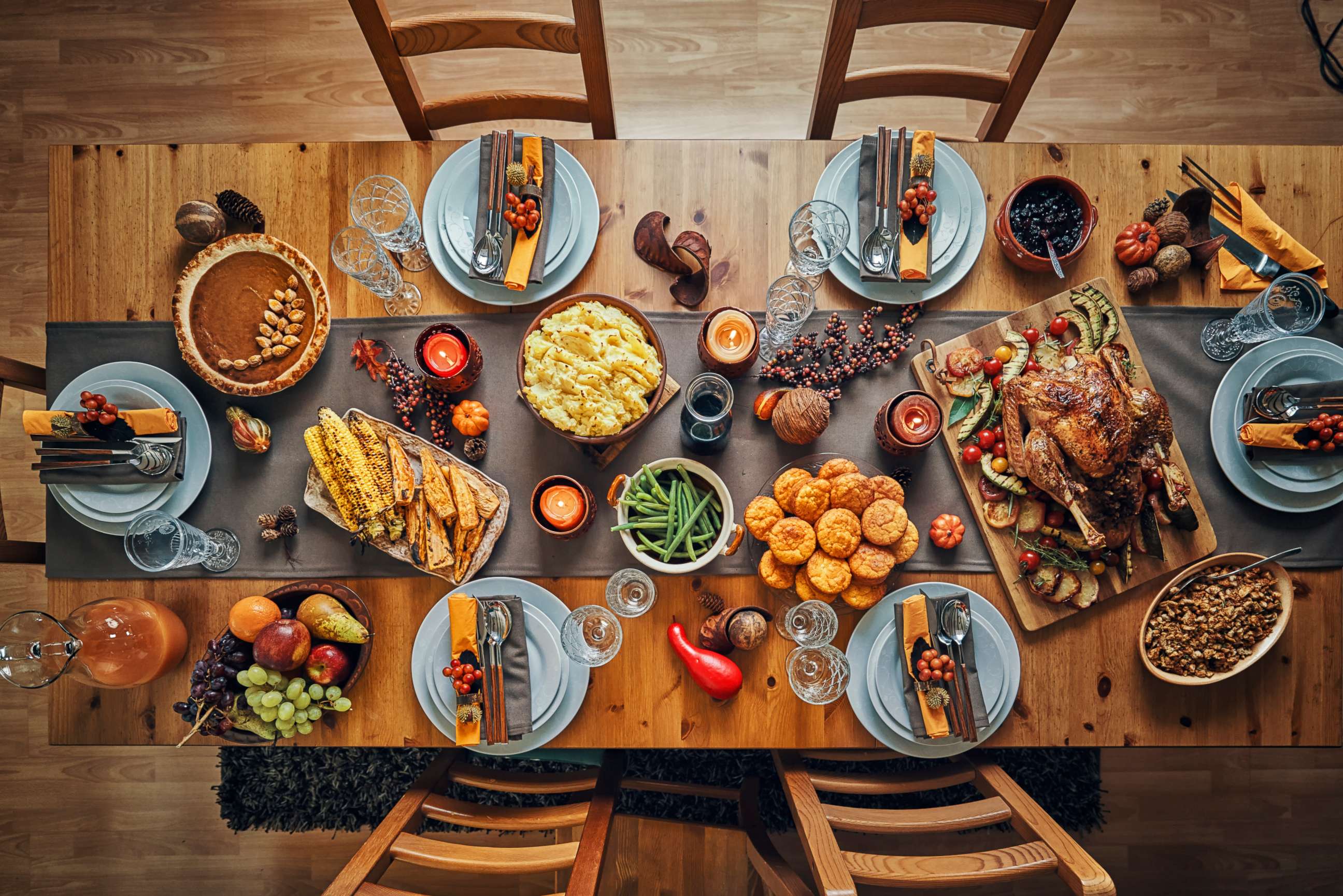
"There has been no studies that suggest that if a plate of food has been sitting out that it could have the virus," Bita Nasseri said. "As far as dry, plastic surfaces it has been proven that the virus can transmit up to 72-hours."
To keep people safe during the meal, the CDC also suggested single-use plastic utensils and recomends asking guests to bring their own food and drink.
Stay at least 6 feet from others who don't live with you
The CDC reminded that people can be asymptomatic and could potentially COVID-19 or flu and encouraged staying six feet, about two arm lengths, from others -- especially those at higher risk of getting sick.
"Limit the number of people in food preparation areas," the CDC recommened.
Coordinate virtual visits for guests who can't make it
"Try to include anyone who is distant. Because of COVID a lot of people will be connected but not in place," Shawn Nasseri said.
"If anyone hits that checklist and doesn't feel well," he continued, "make them a plate, send it to them and then they can Zoom and coordinate it so that everyone eats at the same time."
Given the opportunity, most loved ones will make the wise decision not to expose their family and friends once they have a moment to review the checklist prior to coming to dinner.
He added that this is the year to send possible at-risk family members a care package and make arrangements for them to connect virtually.
"When you sit down to eat, go around the room and Zoom to say what they're thankful for -- even if we're in different places and spaces."
